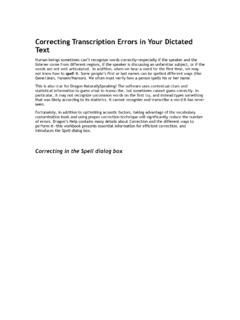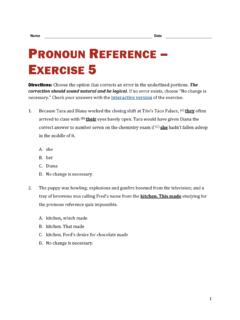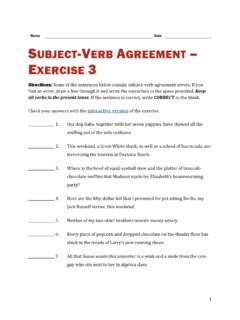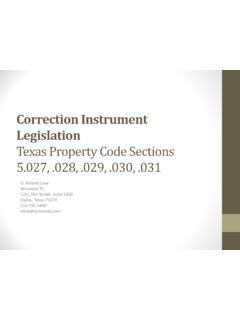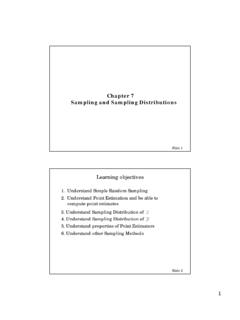Transcription of A One-on-One Program Designed to Improve Students’ Reading
1 HELPS - scientifically-validated to Improve students Reading skills,including - requires no more than 10-12 minutes per day, 2-3 days per - has been used successfully by numerous types of back cover for additional s ManualA One-on-One Program Designed to Improve Students Reading FluencyJohn C. Begeny, FROM THE AUTHOR AND PUBLISHER: If you have downloaded or photocopied these materials free-of-charge, please do the following to Improve the dissemination and knowledge-base of the HELPS One-on-One Program and the associated HELPS Curriculum. 1. Please insert a photocopy of the book cover page into the clear, plastic insert-sleeve on the front of the three-ring binder that contains the pages to the HELPS Program Teacher s Manual. (In downloaded materials, the book cover page preceded this page).
2 If you do not have a plastic insert-sleeve on the front of your binder, please use some form of adhesive to attach the photocopied book cover page to the front of your binder. 2. If you have not directly downloaded these HELPS materials from the HELPS Program website, please register your name on the website ( ). Although the HELPS Curriculum and the HELPS Program Teacher s Manual will continue to be accessible from the website, an accurate database of HELPS Program users will aid in the continual development and dissemination of HELPS Programs. The email information you provide in your registration will also allow HELPS Program staff to contact you when new HELPS Program research and/or free materials become available. 3. If your friends or colleagues photocopy and use your HELPS Program materials, please remind each person to register his/her name at the HELPS Program website.
3 4. The last page in this packet of materials (if downloaded) is the back book-cover page. Please insert a photocopy of that page into the clear, plastic insert-sleeve on the back of the three-ring binder that contains the pages to the HELPS Program Teacher s Manual. If you do not have a plastic insert-sleeve on the back of your binder, please use some form of adhesive to attach the photocopied back cover page to the back of your binder. 5. Please retain this page for future reference. For individuals who write and publish information about the HELPS One-on-One Program and/or the HELPS Curriculum (such as in peer-reviewed journals, books, theses, dissertations, etc.), please use the following references: Reference for the HELPS One-on-One Program : Begeny, J. C. (2009). Helping Early Literacy with Practice Strategies (HELPS): A One-on-One Program Designed to Improve students Reading fluency.
4 Raleigh, NC: The HELPS Education Fund. Retrieved from Reference for the HELPS Curriculum: Begeny, J. C., Mann, C. M., Cunningham, M. D., & Tsuen, H. Y. (2009). The Helping Early Literacy with Practice Strategies (HELPS) curriculum: Instructional passages developed for use with the HELPS Program . Raleigh, NC: The HELPS Education Fund. Retrieved from Photocopying permissions and copyright information for the HELPS One-on-One Program and the HELPS Curriculum are located immediately before the Table of Contents in this Manual. Helping Early Literacy with Practice Strategies (HELPS): A One-on-One Program Designed to Improve Students Reading Fluency _____ The HELPS One-on-One Program Teacher s Manual John C. Begeny, Copyright 2009 by John C. Begeny Published, printed, and distributed with financial assistance from the author, and from The HELPS Education Fund North Carolina State University Campus Box 7650 Raleigh, NC 27695 All rights reserved Cover designs for the HELPS Teacher s Manual and HELPS Curriculum: John C.
5 Begeny, Sr. Production assistance by Diana Greene and Janice Wendt Printed in the United States of America ISBN 978-1-61623-740-0 Photocopying Permissions The author/publisher grants you, the individual user of this HELPS One-on-One Program (which includes this Teacher s Manual and the HELPS Curriculum), permission to photocopy and use all materials in this book for educational purposes, as long as you (a) purchased the books from The HELPS Education Fund; (b) received the books by donation from The HELPS Education Fund, on behalf of the author or his nominated staff; or (c) downloaded the books from the HELPS Program website after completing full registration as a user. Therefore, you may not share photocopies of this book with other individuals unless (a) you can verify and attest that the individual completed full registration as a HELPS Program user on the HELPS Program website, or (b) the individual is a recipient of the HELPS Program implementation protocol ( , a student).
6 With exception to the permission above, no part of this book may be reproduced or transmitted in any form or by any means, electronic or mechanical, or by any information storage and retrieval system, unless permission is explicitly granted in writing from the author. The photocopy permissions above do not grant the right to reproduce pages in this book for resale or redistribution. Registered users of this book may use the materials for educational research purposes, only if proper citation of these materials is provided in all related research reports and documents. Please visit for user registration, free downloads, HELPS Program updates, information about The HELPS Education Fund, and related information. iii Contents List of Tables and Appendices viii Dedications and Acknowledgements ix Introduction to the Helping Early Literacy with Practice Strategies (HELPS) One-on-One Program x Glossary of Key Terms xi Abbreviations xiv Comments about Writing Style xv 1 Why Teachers Should Use the HELPS Program 1 A Crisis in the United States Education System 1 Reading Fluency.
7 What It Is and Why It Is Important 1 Evidence-Based Instructional Practices in Reading Fluency 3 Defining Evidence-Based Practice 3 Reading Fluency Instructional Practices with Research Support 4 How the HELPS Program is Evidence-Based 5 Strengths and Benefits of the HELPS Program 6 Feasibility for Teachers 6 Research, Development, and Educational Policy 6 Additional Benefits 7 2 Students Who Should Benefit from the HELPS Program 8 Using HELPS to Supplement All Students Core Reading Curriculum 8 Using HELPS with Struggling or At-Risk Readers 8 Using HELPS with Struggling or At-Risk Readers in Grades 1 4 8 Using HELPS with Struggling Readers in Grades 5 12 10 Important Tasks before Using HELPS with Middle or High School Students 10 Using HELPS with English Language Learners 11 Using HELPS with a Response-to-Intervention Model 11 Overview of Response-to-Intervention (RTI)
8 11 How HELPS Can Be Used with RTI (or Other Models of Data-Based Decision-Making) 12 Using HELPS at Tier 1 12 Using HELPS at Tier 2 12 Using HELPS at Tier 3 12 Additional Benefits of Using HELPS as Part of a RTI Model 13 3 Implementing the HELPS Program (Part 1): Materials and Training 15 Overview of Materials Needed for Implementation 15 The HELPS Curriculum 16 Importance of Including Words from the Dolch High Frequency Word-Lists 17 Vocabulary and Comprehension Instruction with the HELPS Curriculum Passages 18 Grade Levels of the HELPS Curriculum Passages 18 Training Needed to Implement the HELPS Program 19 HELPS Program Training Steps for Teachers Who Did Not Attend a HELPS Workshop 19 Overview 19 Training Steps 20 iv HELPS Program Training Steps for Teachers Who Attended a HELPS Workshop 21 Overview 21
9 Training Steps 21 The HELPS Program Training Video Exercises 22 HELPS Training Video Exercise 1 23 HELPS Training Video Exercise 2 23 HELPS Training Video Exercise 3 24 4 Implementing the HELPS Program (Part 2): Core Procedures 26 Implementing the Repeated Reading (and Timed Reading ) Procedure 26 Overall Purpose and Relevant Background Information 26 Relationships between Repeated Reading , Timed Reading , and Curriculum-Based Measures of Reading 26 Implementation Rules (Timed Reading Procedure) 27 Timed Reading Scoring Rules 27 Overview 27 Part A: Scoring WIPM 28 Part B: Scoring WCPM 31 Part C: Unique Scoring Rules 32 Part D.
10 Computing WCPM from a Scored Passage 34 Part E: Percentage Agreement Calculations 34 Part F: Sample Passages and Practice Exercises 37 Part G: Additional Tips and Common Administration Mistakes 40 Answer Key for Practice Exercises in Parts A E 41 Implementing the Modeling Procedure 42 Overall Purpose and Relevant Background Information 42 Implementation Rules (Modeling Procedure) 43 Implementing the Phrase-Drill Error Correction Procedure 43 Overall Purpose and Relevant Background Information 43 Implementation Rules (Phrase-Drill Error Correction Procedure) 44 Implementing the Verbal Cueing Procedure 44 Overall Purpose and Relevant Background Information 44 Implementation Rules (Verbal Cueing Procedure)
